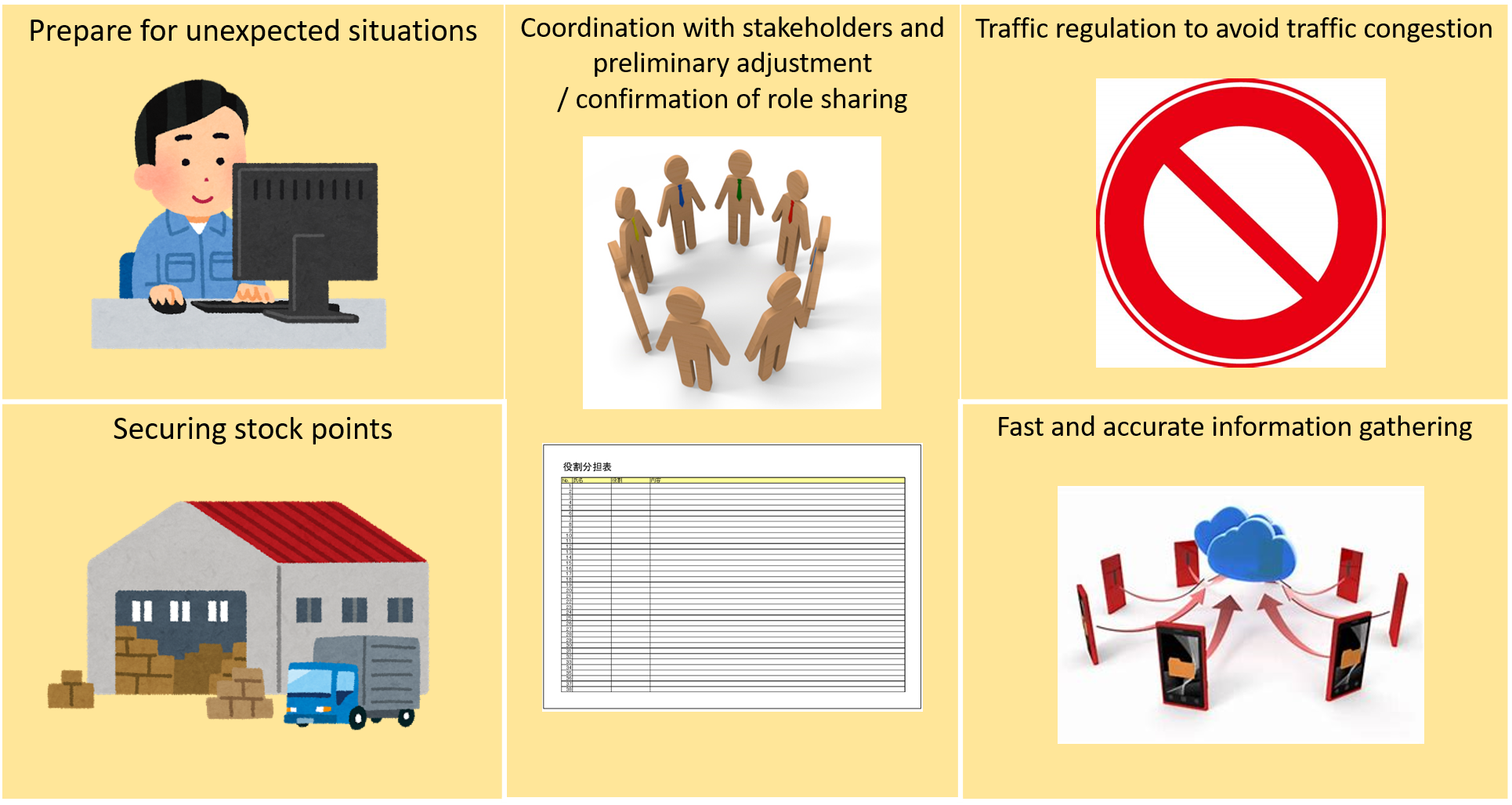In the previous page, I took up the activity of logistics at the time of the past disaster.
However, problems also exist.
So, what kind of problems are there and what kind of solutions are there?
Problem point
So, what was the logistics in past disasters? In addition, what was the problem at the time of the disaster of logistics?
So let's consider the East Japan great earthquake as an example.
The problems of logistics emerging in the Great East Japan Earthquake can be roughly divided into seven in all.
① securing a route that can be transported and acceptable collection places · lack of information ② confusion of the command system · mismatch of supply and demand due to inadequate information transmission
③ Degradation of transportation capacity due to inadequate securing of vehicles and fuel
④ shortage of local government facilities · adjustment of storage place after earthquake · retention of unnecessary non-essential supplies
⑤ Insufficient arrangement by delivery company
⑥ Insufficient supplies · Excess or deficiency for each item
And the seventh problem (⇒ problems through the whole logistics of the Great East Japan Earthquake)
· Some confusion caused by operations by non-professional countries and local governments.
· Lack of goods in various parts of Japan.
① ~ ⑥ in the following figure correspond to ① ~ ⑥ of the above problem.

Solution
So, what kind of method can be used to solve such a problem?
The solution is as follows.

- Logistics was a big success at the East Japan great earthquake, but on the other hand, the task was also highlighted.
- Advance assumptions and countermeasures are very important to make logistics more effective at times of disasters.
BackAbout logisticsNext
